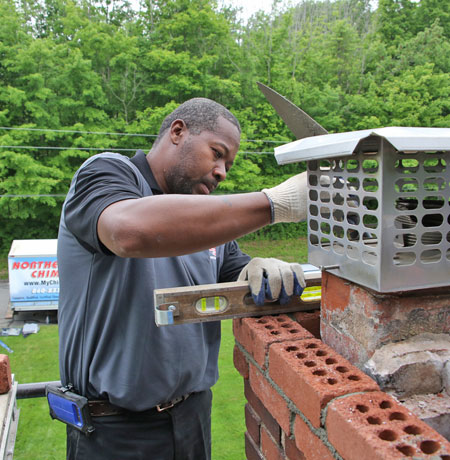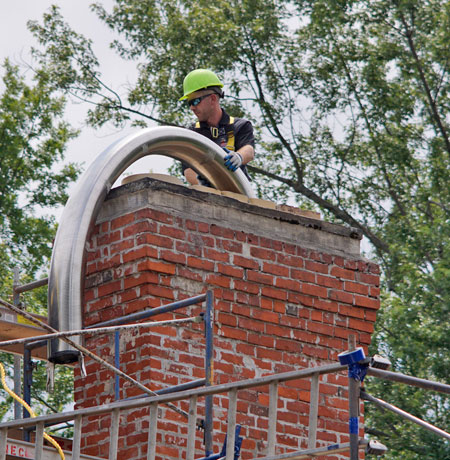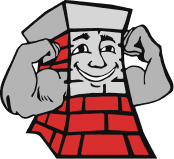Building a New Chimney – What You Need to Know
Fireplaces are one of the most popular features requested by homeowners looking to purchase a new home! The ambiance created by a glowing fire is unlike any other home feature. Fireplaces are worth certain sacrifices—but shortcomings can be overcome! As you make plans to build a new chimney, it helps to know some things upfront that can make a difference in your long-term enjoyment. Read on for information that could be helpful as well as enlightening.
 Placement
Placement
The impact that the placement of your new chimney will have is the first thing you should know about. When the chimney is located on the home exterior, even with a nicely lined chimney flue, cold weather tends to fill chimneys up with a column of cold air. The cold air makes it more of a hassle to light a fire because the cold air must be dispelled before the combustion fumes can go outside instead of in the home.
Also, with all that heavy cold air in the chimney, it can leak into the home and cause your heating costs to rise. In other words, it is best to have your masonry chimney built within the walls of your home, not on an exterior wall.
Masonry Experts Needed
Masonry builder experience and dedication to quality are important to avoid potential disaster. For instance, these chimneys are extremely heavy and require a concrete footing at or below the home’s foundation level. The footing should extend at least 6 inches beyond each side of the chimney. When the chimney footing is insufficient, it can mean bad news for the life of the chimney masonry and possibly the foundation of the house. For you, it could mean great expense because the chimney can settle in a way that pushes past the footing.
Chimney Clearance
 The purpose of a chimney, of course, is to accommodate combustion fumes as they rise up and out of the home. If the chimney is the wrong height, however, the draft can be negatively affected. The chimney top clearance formula is simple. The chimney peak should extend 2 feet higher than anything within 10 horizontal feet.
The purpose of a chimney, of course, is to accommodate combustion fumes as they rise up and out of the home. If the chimney is the wrong height, however, the draft can be negatively affected. The chimney top clearance formula is simple. The chimney peak should extend 2 feet higher than anything within 10 horizontal feet.
Chimney Liner
It is against building code to build a chimney without a liner, no matter where you are in the U.S. Fire safety experts discovered back in the 1940s that building a chimney with a chimney liner is necessary! It was deemed “almost criminal” to do otherwise, due to the grave dangers associated with using an unlined masonry chimney.
Efficient Fireplace
Most home builders “help homeowners save money” by installing a builder-grade fireplace. These appliances are only about 10% efficient at most, which means that at least 90% of the heat produced goes up and out of the chimney. You could save costs later on by having a fireplace insert installed from the start. An insert is a major upgrade and has an efficiency rating of between 65% and 80%. You can cut heating costs by turning off central heating from time to time and relying solely on your fireplace to stay warm. Fortunately, even if you start with a builder-grade fireplace, you can replace it with a wood or gas-fueled fireplace insert or a pellet stove whenever you’re ready.
Contact the chimney experts at Northeastern Chimney LLC for any type of masonry repairs, chimney cleaning, chimney inspections, tuckpointing, chimney flashing repairs, chimney crown repair, and much more. We also sell and install chimney inserts and all other solid-fuel heating appliances. If you are in or around West Hartford, Connecticut, give us a call today at 860-233-5770.


